Enhancing Soft Skills for DevOps Engineers: Essential Non-Technical Skills to Thrive
Collaboration Collusion and Consipiracy
Co creating and Mobbing
Welcome! In this lesson, we’ll explore two powerful practices—co-creating and mobbing—that enhance collaboration, shared ownership, and quality in DevOps teams.
Why Co-creating and Mobbing Matter
Co-creating and mobbing bring the whole team together around a single goal or problem, unlocking benefits such as:
- Real-time idea sharing
- Continuous learning and upskilling
- Collective institutional knowledge
- Improved efficiency and automation
By aligning everyone on the same task, you reduce errors, minimize rework, and speed up future delivery cycles.
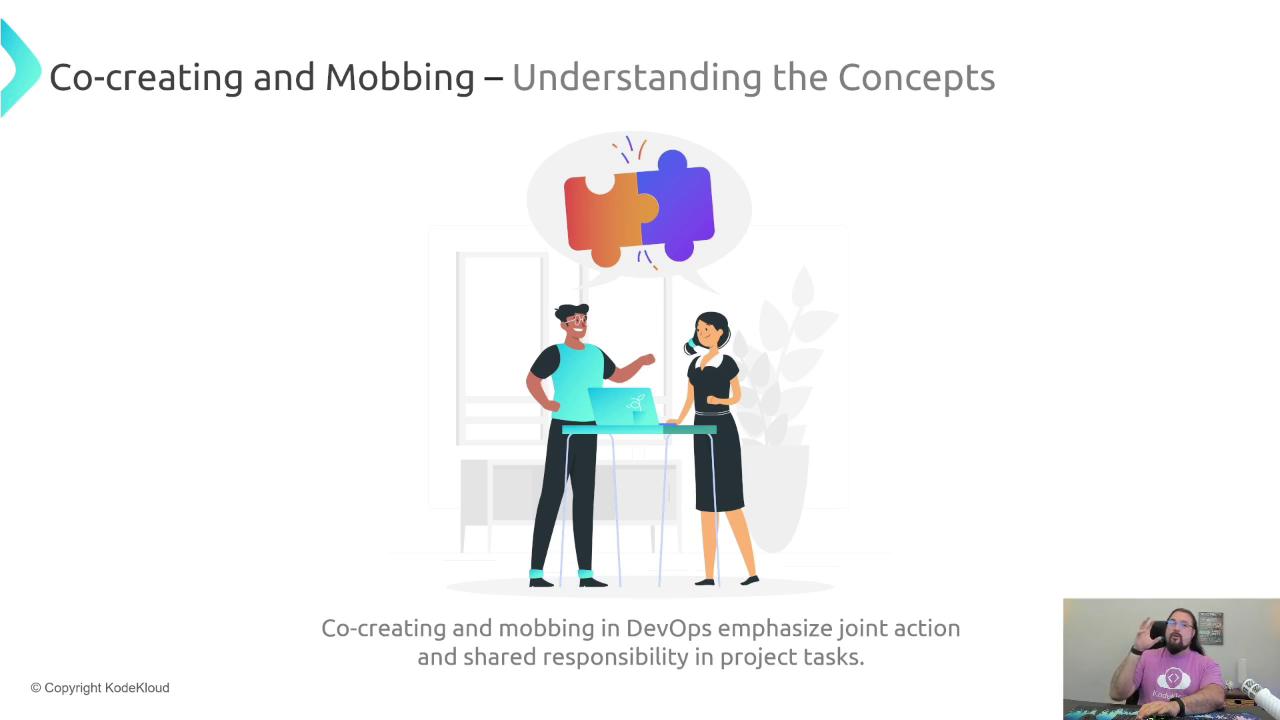
Note
Successful co-creating or mobbing sessions require clear goals, a shared workspace (physical or virtual), and rotating roles to keep everyone engaged.
Defining Co-creating vs. Mobbing
Co-creating
Each team member works from their own workstation, contributing code, diagrams, or documentation into a shared repo or platform. This approach lets individuals iterate simultaneously while maintaining collective visibility.
Mobbing
One person “drives” at a central system—often projected for the group—while everyone else observes, reviews, and suggests improvements. The driver implements the team's consensus in real time.
| Practice | Typical Setup | Core Activity | Key Benefit |
|---|---|---|---|
| Co-creating | Individual workstations synced to a shared repo | Parallel contributions | Speed through concurrent updates |
| Mobbing | Single screen/projector in a war-room or call | Group-guided implementation | High-quality, shared understanding |
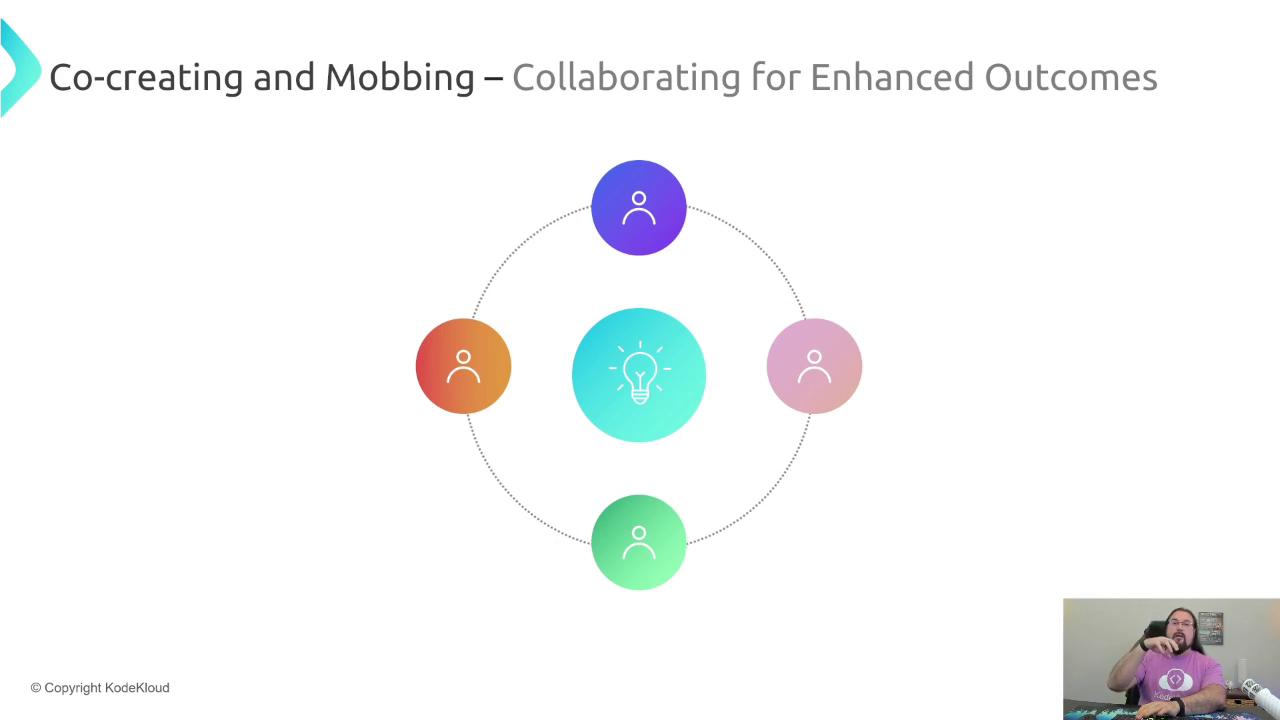
Pair Programming vs. Mob Programming
Pair and mob programming are focused forms of these techniques:
| Method | Participants | Roles | Outcome |
|---|---|---|---|
| Pair Programming | 2 developers | Driver & Navigator | Rapid feedback and mentorship |
| Mob Programming | 3+ developers | Driver & Collaborators | Broad knowledge transfer, fewer defects |
- Pair programming is ideal for onboarding or tackling complex logic.
- Mob programming shines when you need immediate consensus across multiple stakeholders.
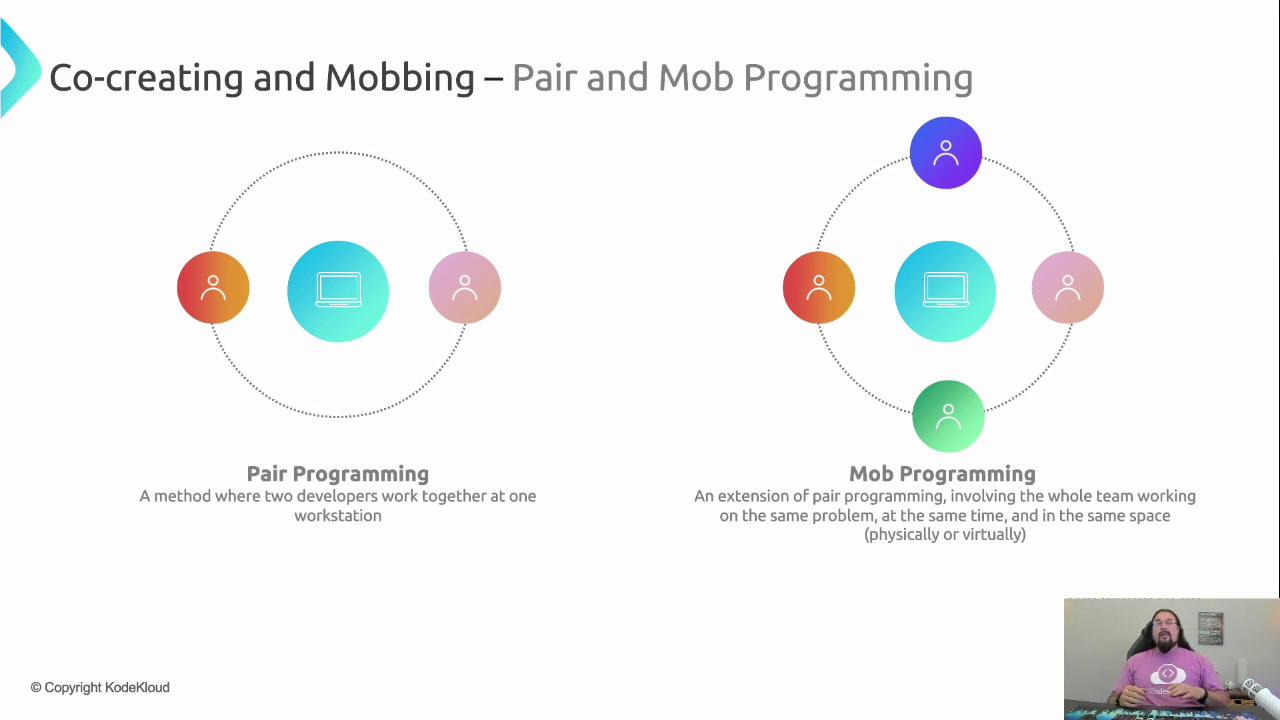
Quality Today, Speed Tomorrow
Investing a bit of extra time now—by pairing or mobbing—yields long-term dividends:
- Fewer production defects
- Less rework and firefighting
- Sustainable, well-documented solutions
- Distributed expertise across the team
Warning
Avoid endless mob sessions without clear goals. Time-box your collaboration rounds to keep momentum and focus.
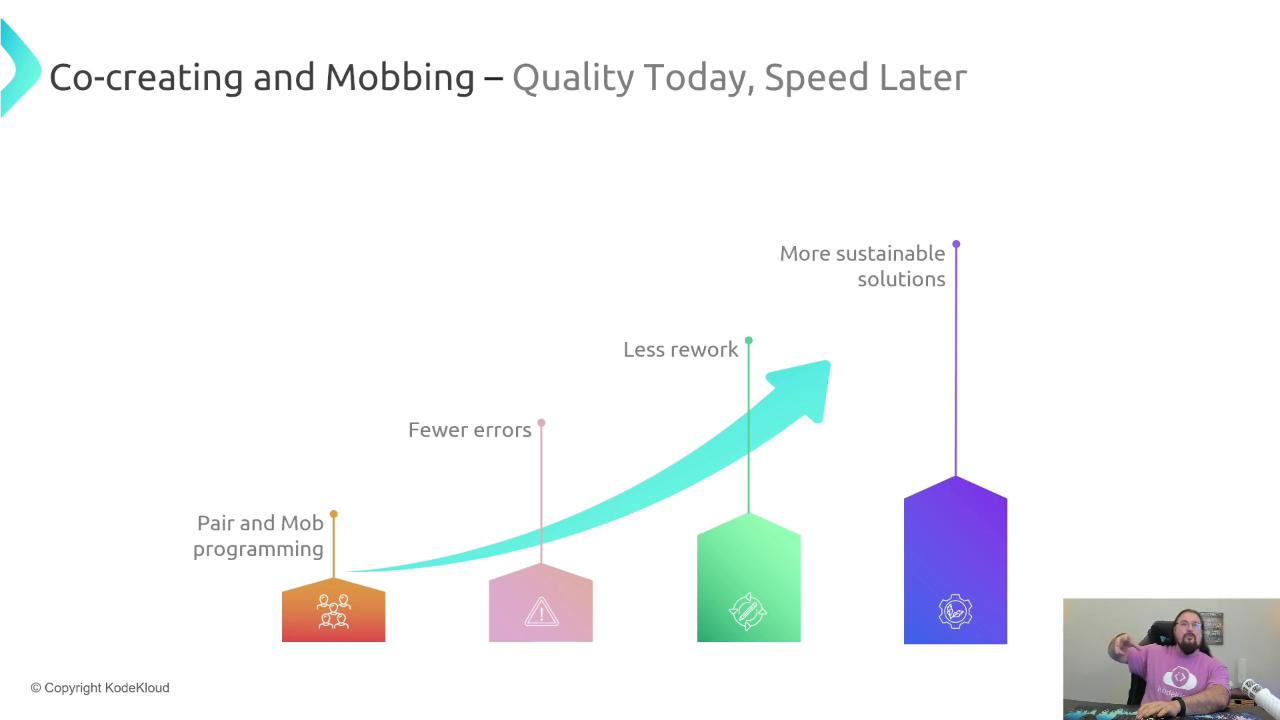
Summary
Whether you’re co-creating documents or mobbing through code, these collaborative practices will:
- Increase long-term quality by embedding best practices from the start
- Foster team cohesion with shared problem-solving
- Accelerate future delivery by reducing defects and onboarding time
- Distribute knowledge evenly across all members
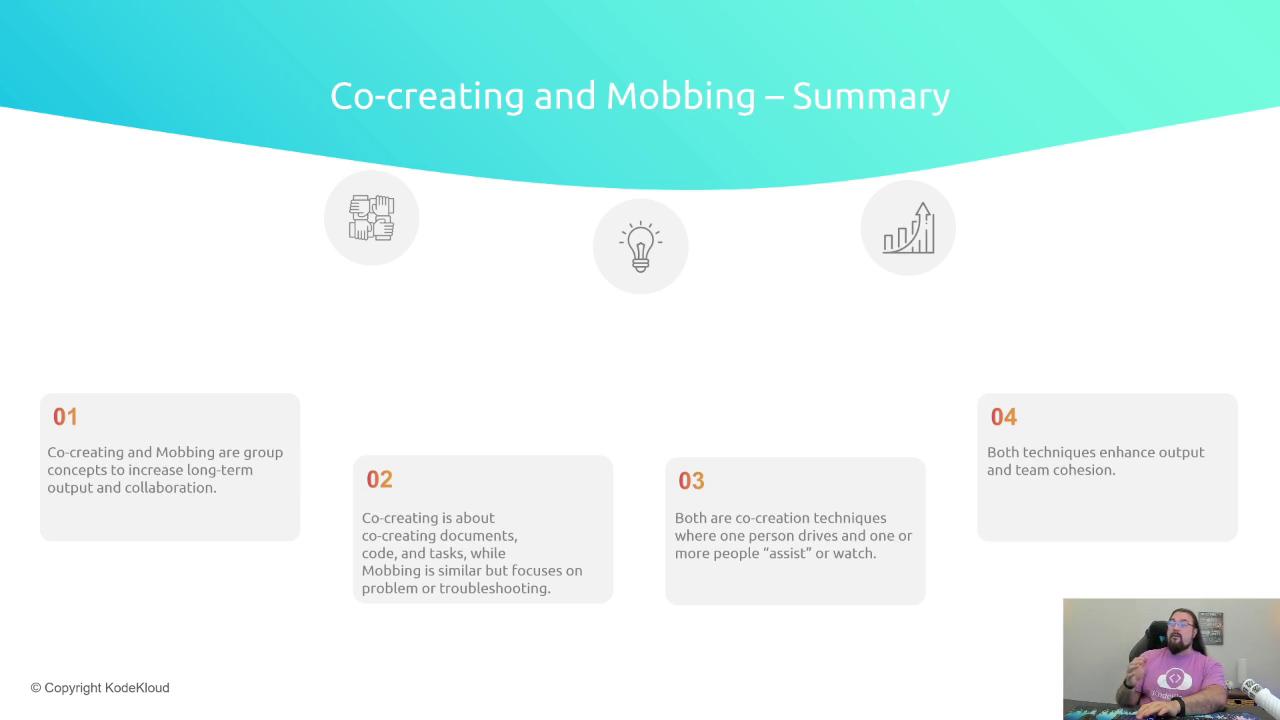
Links and References
Watch Video
Watch video content